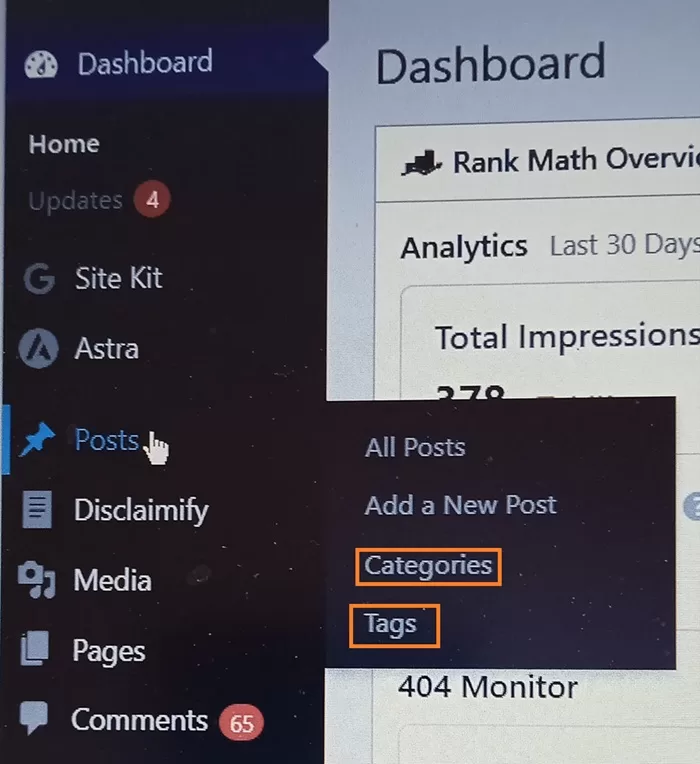Just picture yourself stepping into the grand Library of Alexandria or a medieval scriptorium, where scholars meticulously organized scrolls and manuscripts. They didn’t have the luxury of modern technology, but their mission was just like what we strive for in digital marketing: making it easy for people to find the knowledge they seek.

Let’s bring that ancient wisdom to the table of modern SEO and use it as timeless principles for online discoverability.
But what is the Library of Alexandria?
The Library of Alexandria was founded in the 3rd century BCE, and it was an ancient library based in Alexandria, Egypt. It was part of a larger complex called the Mouseion, which was dedicated to the Muses. Its mission was to gather the wisdom of the world, and it was home to scrolls that contained knowledge on every subject you could imagine. It was a vibrant hub of learning and knowledge, a place where scholars from all over came to study and share ideas. But, as with many great places, it eventually fell victim to damage and loss over time.
(More about it at Wikipedia)
But what’s the connection to modern SEO?
Let’s dive in and see how the principles of categorization, relevance, and accessibility from that era can be applied to modern SEO strategies.
3 Timeless Principles for Discoverability (SEO)
1. Categorization: Organize Content Like Ancient Scrolls
Then:
Librarians in Alexandria were very careful to sort texts by subject, language, and author. In the medieval era, scribes lovingly crafted indexes and tables of contents, helping readers find the information they needed. This was such a helpful practice because it allowed readers to find the information they needed quickly and easily.
Now:
In today’s digital world, categorization is like building a clear and well-organized website structure. Here’s how we do this timeless SEO principle:
- Site Architecture: We organize the website content into logical categories and subcategories. Think of it as building a roadmap that both visitors and search engines can easily follow. This makes them find and follow all pieces of content on the site easily.
- Internal Linking: Just as scribes cross-referenced related texts, linking your articles and pages helps search engines understand the relationships between topics. The aim is to boost visibility or findability by interconnecting related pages on the site.
- Keywords and Tags: We use relevant keywords that reflect our website topics. They act as the “labels” that define each section of the site. This enhances user navigation and improves search engine visibility.
How Should You Do It?
- Create a sitemap and submit it to Google and other search engines.
- Use a content management system (CMS) like WordPress for your website and learn to use your categories and tags in a clear and structured manner.
2. Relevance: Make Your Content Stand Out
Then:
Ancient librarians and scribes would put their efforts into texts that were really important and accurate. They thoughtfully curated collections that reflected the important knowledge of their time.
Now:
Hey, I totally get it—modern SEO can be tricky! But here’s the good news: if your content is relevant and valuable to your audience, you’re already halfway there. It’s so important to really understand your audience and what they care about. Here’s what SEO experts apply to this evergreen SEO technique:
- Content Quality: They create in-depth, accurate, and engaging content that truly answers their audience’s questions. Quality content that answers their quest is key to boosting SEO performance.
- Keyword Relevance: They wisely select keywords that mirror what their target audience is searching for in Google or anywhere. They find and use long-tail keywords that improve their content’s relevance. So, they can rank easily in the SERPs (search engine results pages).
- User Intent: They try to understand what their visitors are looking for and analyze the intent behind the keywords. Are they searching for an informational guide, a product review, or academic research? Then, they create content tailored to meet those needs.
How Should You Do It?
- Use keyword research tools like Google’s Keyword Planner or Answer the Public. Or use top-paid tools like Semrush or Ahrefs that enable you to analyze advanced keyword metrics.
- Discover what topics and questions your audience types in Google to find what they need.
- Select wisely low-competition keywords with significant traffic volume (especially, long tail keywords).
- Understand the intent of the keywords you want to create content for.
- Now, decide which type of content (article, review, infographic, video, etc.) to create and how to create it.
- Finally, use your expertise and create quality content that excites and satisfies visitors.
If you need further learning:
→ Read this simple keyword research article
→Check out some books and courses on content writing
→ Read this article to demonstrate Google’s E-E-A-T signals in your content.
3. Accessibility: Make Knowledge Available to All
Then:
The hardworking scribes of the Middle Ages did everything they could to make sure that manuscripts were available and easy for everyone to read. They did this by hand-copying texts and placing them in libraries so that everyone could access them.
Now:
Accessibility in SEO means making your website easy for everyone to use and find, including search engines and users with disabilities. See how we do it:
- Responsive Design: Now, people can access the internet from mobile devices like smartphones. So, our websites need to adopt mobile friendliness and adapt to different screen sizes (desktops, mobile phones, tablets, etc.). Just as libraries were built to welcome all readers, our websites or blogs should welcome every visitor.
- Fast Loading Times: Google rewards fast-loading pages. We need to optimize images and use efficient coding practices to reduce loading time. A fast website improves user experience and search engine rankings.
- Clear Navigation: We have to create intuitive menus and make our page URLs descriptive. Just as a well-organized index helped medieval readers, clear navigation helps visitors and search engines find their way around our site.
- Accessibility Standards: We have to know web accessibility guidelines (like WCAG). It ensures our content can be accessed by people with disabilities. Using alt text for images and providing transcripts for multimedia content are helpful practices.
How Should You Do It?
- Use a website audit tool like Google PageSpeed Insights to check your site’s loading speed and fix any slow-loading elements on your pages.
- Install a good cache plugin to automatically optimize your page performance.
- Use modern image types like Webp. Consider a CDN service, if possible.
- Use a responsive theme to make your site friendly for any device.
In Conclusion
SEO is all about enhancing discoverability. If your content is tucked away or hidden, people and search engines won’t be able to find it. If you’re struggling to rank in Google, don’t worry! Remember the timeless principles for discoverability used by scholars in the Library of Alexandria and apply the core SEO principles of categorization, relevance, and accessibility. When you do this, your website will be organized, valuable, and user-friendly. That will enhance your website authority. In short, it will become a Google-friendly site.
The principles of organizing information have stayed the same for centuries, and when you apply them thoughtfully, they can really help your site get more visibility on Google and set you on the path to digital success.
So, go ahead and try these sustainable SEO tips, and watch your content become easier for both people and search engines to discover.
We Invite You: Take our SEO Skill Test and know your current knowledge level → Click Here
More Resources for Further Learning:
⇒ Best SEO books
⇒ Top SEO training courses
⇒ Free SEO courses + certificates (Alison)
Disclosure: We are partners or associates of Amazon and other top brands. We may earn a small amount from qualifying purchases without increasing the price. Please read our full affiliate disclosure here.
Ibochouba Singh is a content writer and reviewer with a passion for writing about digital marketing and tech gadgets, including software tools and new tech gadgets. He has over 15 years of experience writing for several consumers and clients, including tech startups, marketing agencies, and software companies. He is writing many articles and product reviews for many websites, including nigcworld.com, buywin.in, medium.com, and quora.com.


